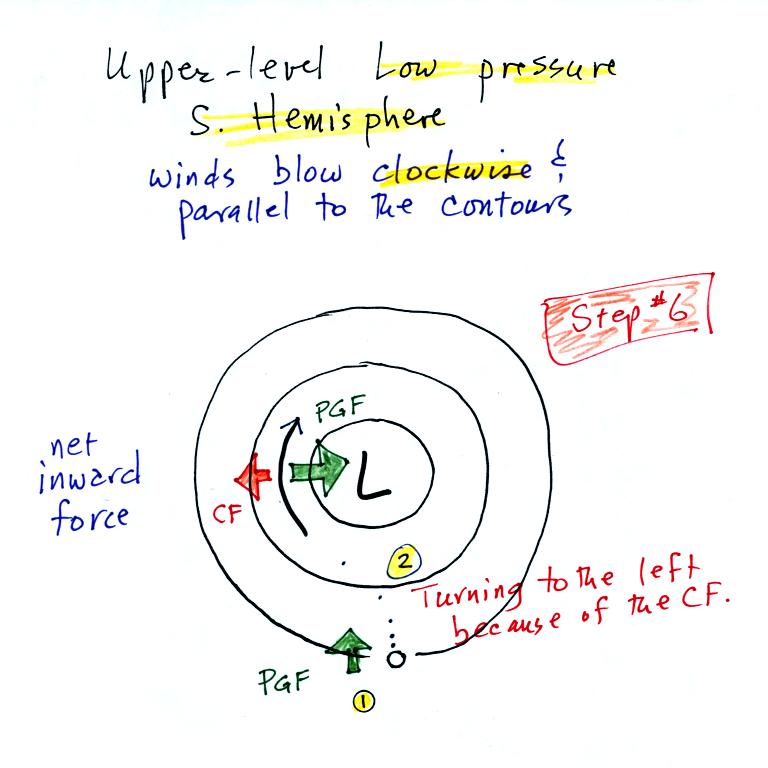Friday Apr. 25, 2008
I was pleasantly surprised by your response to today's music.
Next week we'll move from CDs to DVDs (provided I can figure out
how to use the DVD player)
An in-class Optional Assignment accompanied today's class.
Answers will appear online early next week (after the Sect. 33 class
meets on Tuesday morning)
We're
trying to understand why winds blow the way we do. It should be
possible to do this in 10 fairly easy to understand steps. The
first step is shown below

The winds above are what we will be trying to understand.
Upper level winds blow parallel to the contours. You should be
the end of the class today be able to pick one of the 4 upper level
winds and be able to show the directions of the PGF and the CF.
Here's an
example
Frictional force (which is absent at upper levels) causes surface winds
to blow across the contours toward low pressure. Here's an example of
what you should eventually be able to say about anyone of the 4 surface
winds examples above.

The main point to take from Step #2 is that a net inward force is
needed anytime an object is moving in a circular path.

The pressure gradient force always points toward low pressure.
The PGF can cause stationary air to begin to move (move toward low
pressure).

The Coriolis force points perpendicular to the wind. It can only
change the wind's direction, it can't cause the wind to speed up or
slow down. The direction of the CF depends on whether you're in
the northern or southern hemisphere.

Now we start to put everything together. The PGF at Point 1
starts stationary air moving toward the center of low pressure.
Once the air starts to move, the CF causes it to turn to the right
(because this is a northern hemisphere chart). The wind
eventually ends up blowing parallel to the contour lines and spin in a
counterclockwise direction.

The situtation is similar in the southern hemisphere. The CF
causes the wind to take a left turn, however. The wind ends up
blowing in a clockwise direction around the low pressure center.

With high pressure the air starts moving outward. In this example
the wind takes a right turn and ends up blowing in a clockwise
direction around the high. Note there is a net inward force here
just as there was with the two previous examples involving low pressure.

Winds spin counterclockwise around high pressure in the southern
hemisphere.

Friction acts in a direction opposite the wind. Friction can only
slow down the wind. Slowing the wind weakens the CF and it can no
longer balance the PGF. The wind ends up blowing across the
contours always toward low pressure. Together the frictional
force and the Coriolis force balance the PGF.

The winds are spiralling inward in the top and bottom examples.
These must be surface centers of low pressure. The middle two
examples are high pressure. Converging winds cause air to
rise. Diverging winds created sinking wind motions.









